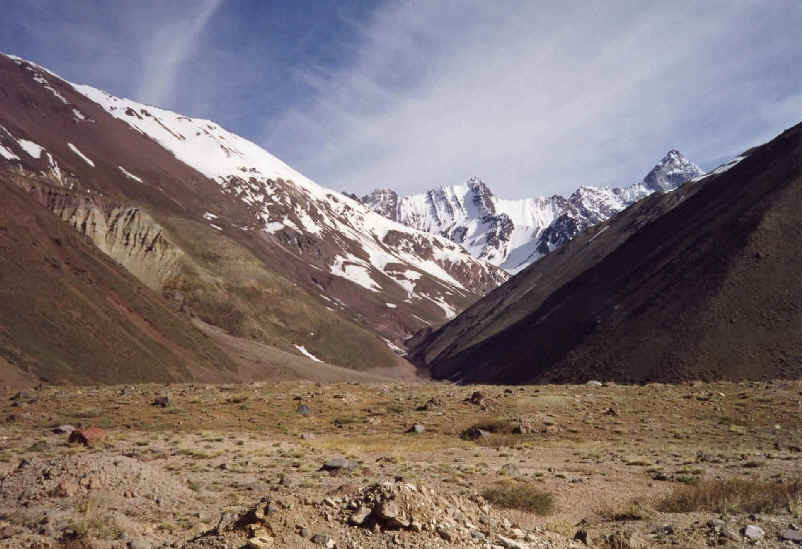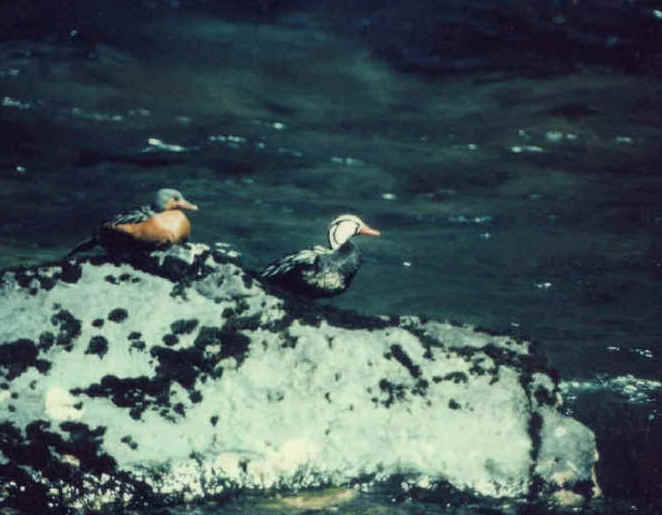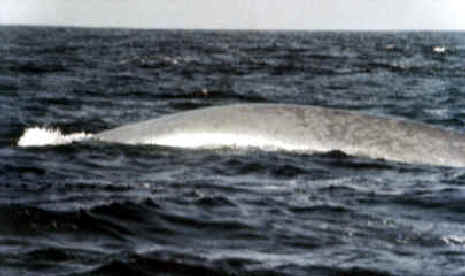
E-mail: font@focusonnature.com
Phone: Toll-free in USA 1-888-721-3555
or 302/529-1876
 |
PO
Box 9021, Wilmington, DE 19809, USA E-mail: font@focusonnature.com Phone: Toll-free in USA 1-888-721-3555 or 302/529-1876 |
A Focus On Nature
Tour
In CHILE
For Birds
and Other Nature
in a Beautiful Country
In Central and Southern
Chile
for
large and small and unusual birds,
from
the sea to the mountains and in between.
Including Chiloe Island
In 2014, to be our 21st year for this tour.
Among the birds:
Pintados
and other Petrels, Albatrosses (we've
seen as many as 9 species),
Condors,
Rayaditos, Negritos, Tapaculos, including a Turca &
Huet–huets and a Chilia.
Also: a Diucon and Diuca-Finches. the Diademed Plover,
and a number of birds either
"Magellanic" or "Austral"
(tours:
FON/CH-1 ’16)
January
8-17, 2016
in the
Andes, a Pelagic Trip,
& the Lake District & Chiloe Island in Southern Chile
Tour to be led by Armas
Hill,
who has birded in Chile many times
since the first of all FONT tours,
which was in Chile in 1990.
Links:
A List & Photo Gallery of Chile Birds, in 2
Parts:
Part 1: Tinamous to Coots
Part 2: Thick-knee to Saltator
Chilean Albatrosses & Other Seabirds
Mammals of Chile (with some photos)
Amphibians & Reptiles in Chile & Argentina
Butterflies in Chile The Diverse Plant-Life of Chile
Some Highlights from Previous FONT Chile Tours
A
Photo Gallery from a Previous FONT Tour
in Central & Southern Chile
A Feature with Some Poems about Birds
by Pablo Neruda (with photos)
Tour CH-1: in Central & Southern Chile
Fri: Jan. 8
Arrival
in the morning in
Santiago,
Chile
(after overnight flight departing North America, Thu, Jan. 7).
Birding during the afternoon up in the Andes
east of Santiago, where during our first day we could well see Andean Condors
and one of the Chilean tapaculos known as the Moustached Turca. in
addition to various ground-tyrants and other birds of the mountains
including canasteros, miners, and earthcreepers. Overnight
in Santiago.
Also, this day, for those who wish, a visit to a house of the late Pablo
Neruda, the Nobel Prize winner who wrote poems about many of Chile's
birds. His house and library is close to our hotel.

An Andean Condor photographed by Alan Brady,
during the first FONT tour in Chile in 1990.
Sat: Jan. 9
Our birding and exploration, this day, will be in the Andes,
a couple hours or so southeast of Santiago. We'll visit in the area of
Reservoir el Yeso. In this area of
beautiful scenery, we'll see a number of high Andean birds. Among the birds
there, we'll seek the rare and
attractive Diademed Plover, that's been seen during 12 FONT tours since 1990.
Another most-interesting bird in the area is the endemic Crag
Chilia a denizen of cliff-sides. On the ground, there will be various ground-tyrants,
sierra-finches, and the Gray-breasted Seedsnipe. In the overhead sky, we’re
again apt to see large Andean Condors soaring in the thermals. After a full-day
of birding, mostly in the mountains, we'll overnight in a setting of hilly
Chilean countryside southeast of Santiago.

The area of
the Yeso Valley in the Andes
in central Chile,
where over the years we've seen the specialty bird
in the photo below, the Diademed Plover.

This Diademed
Plover was photographed
by Alan Brady during the first FONT tour,
in Chile in November 1990.
Sun: Jan. 10
More birding, this
morning,
in the mountains and hills east of Santiago. We'll ascend another road up into
the Andes, where we should see more turcas and tyrants, and an
assortment of finches and furnarids, in addition to such targets
as the Giant Hummingbird, Dusky-tailed Canastero (a Chilean
endemic), and maybe Mountain Caracara. More condors may again
be
seen.
By mid-day, we'll be heading south toward the small Chilean city of Rancagua.
East of there, in the afternoon we'll be seeing yet another cast of avian
characters, the star of which should be the Burrowing Parakeet. Although
it's a parakeet, it's large - as large as small macaw. And it's colorful, with
an assortment of colors including yellow, blue, red, olive, gray, and white. And
although the species is not endemic to Chile (it is also in parts of
Argentina), it is in Chile an endangered subspecies that is very localized.
So, a wonderful bird to see, and after we do, we'll overnight in
Rancagua.
Mon: Jan. 11 In the morning, we'll
start our drive south, leaving behind the vineyards of central Chile, and
heading toward where it's less dry and more green in the regions of Los
Rios and Los Lagos, the regions
of the rivers and the lakes. The rivers are filled with water from melted snow
in the Andes, flowing to the sea. In the area of one of the rivers, the Rio
Bio Bio, there is a transition from the native
"Mediterranean-type" flora & fauna of Chile to the
"Patagonian".
South of the Bio Bio, we'll be visiting this afternoon and the next morning, the
national park of Conguillio and the national
reserve Malalcaheullo. We'll spend the night at a hotel in the
country, nestled between those two places.
In the region, in addition to an assortment of fine birds, we'll see
wonderful forests of Araucaria trees, and scenery more than fine, that's
absolutely wonderful, with snow-covered volcanoes having names Llaima
and Lonquimay.
If we're lucky, after dark, in this area and our next during the tour, we may
see a nice mammal, such as a Kodkod (a wild cat) or a Lesser Grison
that were seen during our tour, in this region, in November 2011.
Tue: Jan. 12 After our morning in the
areas of Conguillio and Malalcahuello,
we'll go a bit further south to the area of another national park, called Puyehue.
In this beautiful area of forests and mountains, we should encounter some
wonderful wildlife. It's a prime area for various tapaculos (including
the Chucao and the Huet-Huet) in addition to an intriguing bird,
the Des Mur's Wiretail. Additional birds of note could be the Rufous-tailed
Hawk and the Spectacled (or Bronze-winged) Duck.
Mammals in the area range from the small Monito del Monte to the Puma.
The Monito del Monte, a marsupial, is quite interesting as it is the only
surviving member of an ancient order of mammals, the Microbiotheria, and it is
closely related to the Australasian marsupials. The mammal likes stands of
bamboo in the Nothofagus forest where we'll be hearing the echoing,
hollow calls of the tapaculos.
Wed: Jan. 13 We'll go
further into one of the most beautiful regions anywhere on earth, the "Lake District",
with not just lakes, but with even more striking snow-capped volcanoes, clear rushing streams,
and lush green forests. This region is a northern, and forested, part of
Patagonia. All of the natural features just mentioned (snow-capped mountain,
rushing river, and native forest) occur in the fantastically scenic area of the Vicente
Perez Rosales National Park. Our overnight accommodation will near
the park, on the shore of Lake Llanquihue,
close to forest where birds include the magnificent Magellanic Woodpecker. Nearby, along the river, pairs of Torrent Ducks reside. Often, this time
of year, they are seen with their young ducklings. Overnight in
Puerto Montt.

A pair of Torrent Ducks
photographed by Alan Brady,
during the November 1990 FONT Chile Tour
Thu: Jan. 14
Not far south of Puerto Montt,
we'll be taking an early morning ferry to Chiloe Island.
During our previous tours, from that ferry to the island, there were shearwaters,
terns, gulls, and pelicans in the sky. In the water, there were sea-lions and
penguins propelling in the water close to the boat.
During one tour, we were fortunate to see a species of storm-petrel said
to be new to science.

A Ferry to Chiloe Island
photographed during the FONT Chile Tour in November 2011
On Chiloe Island, again, as we have in the
past, we'll visit a penguin
colony along the seacoast, where two species nest, the Magellanic and the
Humboldt Penguins.
Also at that scenic spot are Rock Cormorants and Imperial Shags, Flightless
Steamer-Ducks, and Kelp Geese. An interesting animal also occurs: the
Marine Otter, a rare species
related to the Sea Otter of North America. All of these we see from a
boat close to the cluster of rocky islets where the birds and otter live.
We'll spend the night in that picturesque area of coastal Chiloe Island, to be
in position early the next morning for another boat-trip further from shore
during which we could see an assortment of seabirds, including hopefully albatrosses
of multiple species, and the Blue Whale that occurs in that area during
the Austral Summer.
The Blue Whale is the largest creature on our planet, and it is rare. So,
of course, it would be good to see as would be a Royal Albatross with one
of the longest wingspans in the world, as wide as 11
feet.

A Blue Whale
(photo by Armas Hill)
Fri: Jan.
15 Most of this day will be
spent with more birding and exploration on Chiloe
Island, including an area of a national park,
where there is a fine
indigenous forest.
In the forest on the island, in the past, we've been treated to male and female Magellanic
Woodpeckers.
A Chilean endemic, the Slender-billed Parakeet will be conspicuous, as it
tends to call loudly as it flies.
When seen well, it's an interesting bird with a long upper bill, and a short
lower one.
On bodies of water, a great bird to see is aptly named the Great Grebe.
In various habitats, this day we should see a number of birds
(including some subspecies endemic to Chiloe).
Not endemic to Chiloe or Chile, but a seasonal visitor that's on the island in
large numbers, is the Hudsonian Godwit. It's interesting that the
large number of them there accounts for as many as 25% of the species' total
population.
On Chiloe Island, during our tours, we had a "full-deck" of 3
species of oystercatchers: Magellanic, Blackish, and American.
Chiloe is a rural
and tranquil island that's good for birds, with an assortment of habitats. A
bird there that particularly deserves mention, as it is a Chiloe namesake, is the
Southern Wigeon, that's often called, in the books, the Chiloe Wigeon.
We'll
have a second overnight on Chiloe Island.
Sat: Jan. 16 This day we'll be heading
north, having again taken an early morning ferry from Chiloe. Mid-day we'll do
some birding and have lunch in the riverport city of
Valdivia.
The birding will be in an area of extensive reedbeds
and wetlands, where a number of bird species occur including the
Cocoi Heron, White-tufted Grebe, Spectacled Tyrant, Yellow-winged
Blackbird, but maybe the best of all (and certainly the smallest of
them), the colorful Many-colored Rush Tyrant, known in Spanish as the
"Siete Colores de la Laguna", the "Seven Colors of the
Lake".
Lunch will be seafood (if preferred) by the river. After lunch, there will be a boat-ride
in a large area of wetland that's been a reserve since it was recognized
as such by UNESCO in 1981, The reserve has a name, the "Santuario
de la Naturaleza Carlos Anwander". The flooded wetland was
formed after an earthquake in 1960. During the boat-ride, we should see, as have
previously: many Black-necked Swans, ducks, coots, grebes, and
colonies of Brown-hooded Gulls and Snowy-crowned Terns.
Afterwards, we'll continue our northward journey, with an overnight at a nice
hotel in Los Angeles.
This "Los Angeles" is in Chile, but the hotel will be as nice as
nearly any in
California.
Sun: Jan.
17 We continue the final
part of our drive north to Santiago, to be at the airport in the evening for the
international flights departing Chile (arriving in North America the
following morning, Mon, Jan. 18).
![]()
Prices:
Tour
CH-1 (in Central & Southern Chile):
January 9-18:
US $2,995 per person.
Single supplement (when
available): US $395.
Includes:
All overnight accommodations.
Ground
transportation within Chile.
Meals: breakfasts & lunches (Jan 9-17)
Services of an expert birding leader, familiar with the
birds and the localities.
Does not include:
Air transportation to/from Chile.
Dinners.
Drinks and any items of a personal nature.
Airport taxes.
Gratuities.
A deposit of US $500
is required to reserve a place on this tour